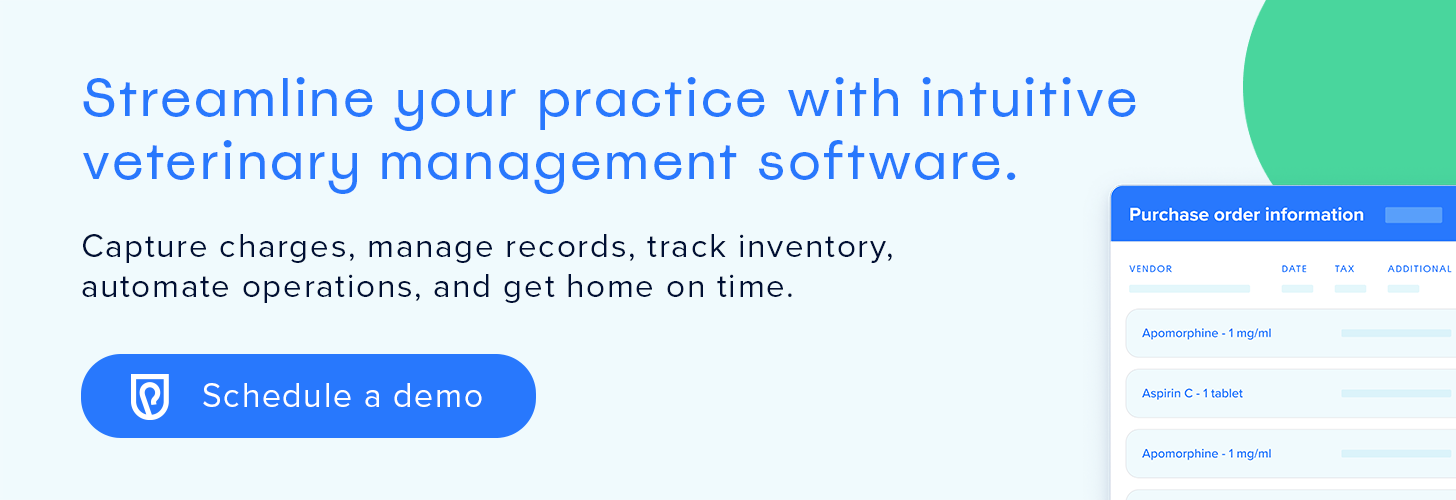4 Ways to Start Using AI in Veterinary Medicine

Unless you’ve been living under a proverbial rock, there’s no escaping artificial intelligence (AI) in our modern world. The technology has gone from mythical to ubiquitous in only a few years and has made its way into the veterinary profession. AI tools promise to make clinic life easier and more efficient, but getting started can feel overwhelming. This guide will walk you through helpful applications and provide suggestions about how to dip your toe into the AI pool. (Hint: You’re probably already knee-deep!)
What is AI?
AI is a broad category of computer systems that try to simulate the human brain, including learning and reasoning. Instead of a brain, AI systems use algorithms, which are instructions that tell the AI how to “think” about data inputs to achieve specific goals. Humans must train AI systems and develop algorithms to ensure consistent and reliable results.
AI applications in veterinary medicine
AI has many versatile applications in veterinary medicine:
- Diagnostic imaging — Imaging algorithms can analyze radiographs and CT or MRI scans to detect abnormalities the most seasoned radiologist might miss.
- Research and analytics — AI can analyze datasets to predict health issues and enable proactive interventions. AI has been used in the lab to study antimicrobial resistance, cancer, vaccines, epidemiology, and genomics.
- Administrative efficiency — AI automation simplifies appointment scheduling, inventory management, client communication, and medical records management. Generative AI tools can assist in any task that requires writing or creativity, including marketing and client education.
Getting started with AI
AI can assist you in almost any task, so where should you begin? Here are a few practical ideas on how to get started.
- AI-powered scribing software — AI scribe tools record conversations during veterinary exams and consultations, then transcribe the interaction into structured medical record SOAPs and communication logs, reducing the need for manual note-taking. AI algorithms help veterinarians complete records quickly, sometimes within the allotted appointment time.
- Practice management software — Many cloud-based, newer practice management systems like Shepherd incorporate AI features to streamline operations. Once you’re comfortable with built-in AI, you can integrate additional third-party apps into your cloud platform.
- Diagnostic support — Diagnostic platforms with AI analysis provide rapid radiograph interpretation and support in minutes instead of hours or days, significantly improving time management. If you’re looking for new in-house lab equipment, consider analyzers with AI image analysis for quick and accurate results that bypass manual microscopy.
- Large language models — ChatGPT, Google Gemini, and Microsoft Co-Pilot are publicly available large language models (LLMs) that users can “play” with to their hearts’ content. Visit them, ask questions, and chat with the AI to learn its capabilities and limitations. For example, you can use LLMs to draft emails, summarize long documents, or brainstorm ideas.
Before you start: Ethical and legal considerations
AI can’t replace the logic and reasoning possible in a human brain, so take their outputs with a grain of salt. Most AI-enhanced clinical tools have a narrow operational scope, are trained by experts in their respective fields, and can be tested for accuracy and reliability before they hit the market. However, generative AI like ChatGPT isn’t so heavily policed and often makes mistakes.
Always double-check an AI tool’s work, as it could contain fabricated facts, sources, and quotes presented as truths. Never use a client or patient’s protected health information when chatting with an AI tool, as the platforms may use or store the data in ways that compromise security.
Harness the power of AI with Shepherd
You don’t have to be a tech genius to incorporate AI into your daily life and work. Start with Shepherd’s built-in AI assistance and explore our integrations to find platforms that customize your software experience and meet your clinic’s unique needs. Schedule a demo or contact our team to learn more about our cloud-based practice management software.
